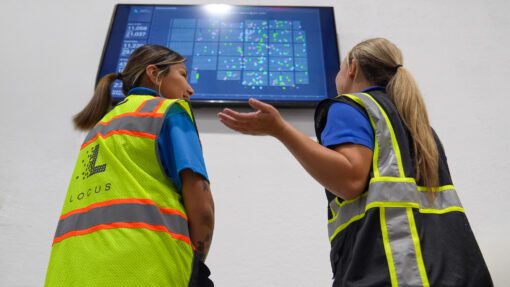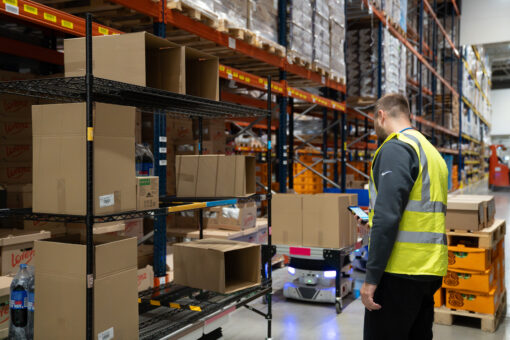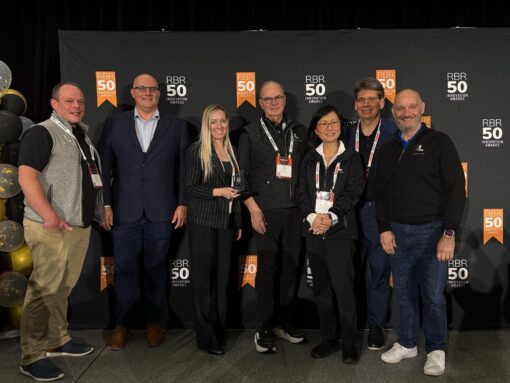WP: How to achieve 400 UPH with Locus Fast Pick
WP: How to achieve 400 UPH with Locus Fast Pick Download Now!
A Warehouse Leader’s Playbook: Balancing Automation and the Human Touch
Mary Hart, Sr. Content Marketing Manager

When Tony Altman, President and CEO of Motivational Fulfillment & Logistics Services, joined me on Warehouse Automation Matters, our conversation centered on a theme every warehouse leader wrestles with in how do you implement automation without losing the human touch?
For Altman, the answer lies in continuous improvement, flexible systems, and above all, a people-first culture. His perspective offers a practical roadmap for leaders considering their next move. Here’s a playbook drawn from that conversation.
Start with Continuous Improvement, Not Just Technology
Altman explained that customer service has always been the foundation of Motivational Fulfillment, but scaling required a more structured commitment. In 2023, the company created an executive-level role for continuous improvement to ensure safety, quality, efficiency, and on-time delivery were prioritized every day.
“At Motivational, we’re big advocates for continuous improvement,” Altman said. “We’ve always worked to stay agile, efficient, innovative.”
Your Move:
- Appoint a clear owner for continuous improvement in your organization.
- Define improvement in terms of measurable outcomes: safety incidents, order accuracy, delivery times.
- Treat continuous improvement as an ongoing discipline, not an ad hoc reaction to problems.
Use Automation to Improve the Human Experience
When Motivational launched its Mississippi facility, they introduced Locus Robotics to support picking operations. The results were clear in faster picking rates, shorter training times, improved accuracy, and higher throughput. But the impact that mattered most was on the workforce.
“We see automation as a way to improve the employee experience,” Altman said.
By reducing strain and fatigue, Locus Robots improved morale, lowered injuries, and helped employees pursue new skills and advancement opportunities.
Your Move:
- Frame warehouse automation as a tool to help employees.
- Track metrics like employee retention, training time, and job satisfaction alongside throughput.
- Involve your workforce in automation rollouts by showing how it makes their work safer and easier.
Make Change Management About Communication
Resistance to new technology is natural, but it’s not inevitable. Altman emphasized that change works best when communication is front and center.
“We don’t just implement new systems and kind of spring it on the employees,” he explained. “We meet with the customers, the management team, and the teams on the floor.”
By explaining why changes matter and how they improve both safety and efficiency, Motivational secures buy-in from employees and customers alike.
Your Move:
- Start every warehouse automation rollout with listening sessions to surface employee and customer pain points.
- Train “for context” and show employees not just how to use new tools, but why it matters.
- Celebrate early wins with the team to reinforce momentum and buy-in.
Prioritize Flexibility in Your Systems
One of Motivational’s biggest differentiators is its proprietary WMS and OMS, built in-house to allow rapid iteration. Altman recalled a moment when a customer requested the same change from Motivational and another 3PL. Motivational delivered in a week at no cost; the competitor quoted six months and $80,000.
“We wanted to offer flexibility and nimbleness,” Altman said. “That’s been a huge competitive advantage for us in the market.”
Your Move:
- Audit your current systems for agility. How quickly can you integrate new APIs or update workflows?
- Quantify the customer impact of faster iterations, whether in cost savings or responsiveness.
- Avoid relying solely on off-the-shelf solutions if they limit customer-specific flexibility.
Tailor Automation to Customer Needs
The biggest mistake, Altman warned, is treating automation as a one-size-fits-all solution.
“Automation isn’t one size fits all,” he said. “Build a solution to fit the customer.”
Too many 3PLs invest in massive automation systems and then force customers to adapt. Motivational flips that approach by designing automation around specific needs.
Your Move:
- Map customer pain points before deploying automation.
- Design flexible workflows that adapt to different customers, not the other way around.
- Evaluate automation investments not by scale alone, but by fit for your customer base.
Altman’s message is clear that automation succeeds when it’s grounded in people, flexibility, and continuous improvement. Robots and systems may drive throughput, but trust, communication, and customer alignment are what make automation sustainable.




